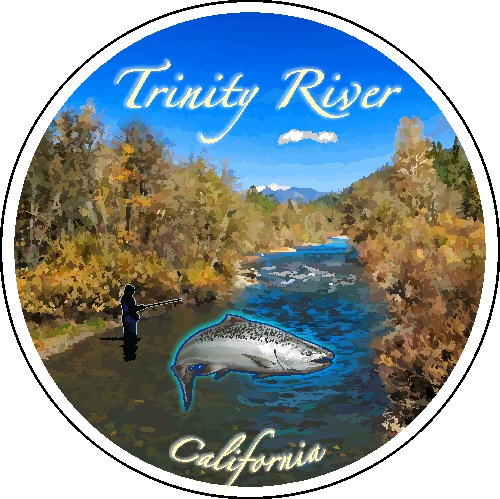TRINITY RIVER WATERSHED
Trinity County is in a severe drought and the effects on our water resources are drastic. Streams across the Trinity River watershed are dangerously low. Tributaries that have decades of flow data recorded, including Coffee Creek, Indian Creek, and Rush Creek, are fast-approaching or well under the 2014 record lows. The South Fork Trinity River flow is at 30% of the average for this time of year.
The severe drought we are in has both short and long-term impacts. In the short term, households run out of water, creeks go dry that normally would flow all year, fish and wildlife face increased disease and habitat loss, and wildfires rage across our forests. The long-term impacts compound with each additional drought year. In particular groundwater resources continue to be depleted without the proper replenishment. This means it will take increasingly more water to recharge our groundwater storage, and by extension, restore adequate water to our streams and springs.
The Little Trinity River in the Upper Trinity River watershed.
See real time flow information
Did you know...
Did you know Trinity and Lewiston Dams actually keep the Trinity River flows higher and colder in the summer than they normally would be? Before any dams were built on the Trinity River, natural instantaneous streamflow in Lewiston ranged from as low as 30 cubic feet per second (cfs) to as high as 70,000 cfs. Now, river flows are held between 150 and 300 cfs most of the year, which is artificially higher in the summer and lower in the winter. This means in drought years like what we are experiencing now, the main stem Trinity River remains more habitable for fish than many naturally fed tributaries.
What can you do to reduce your water usage?
No matter what water source you use, everyone can help conserve water and protect our water resources. Household water saving tips:
• Turn off faucets and avoid leaving water running when brushing your teeth or washing dishes.
• Only use automatic dishwashers or washing machines for full loads.
• Water your lawn only when it needs it, and long enough for the water to seep down into the roots.
• Water your lawn and plants during the coolest parts of the day
• Put mulch or groundcover around plants to hold moisture in the soil
• Collect the water that you let run from the faucet until the temperature is right and use that to water plants.
Ways to protect our natural water resources:
• Avoid the use of fertilizer or pesticides
• Pick up and properly dispose of dog waste and trash
• Properly dispose of human waste (see https://lnt.org/why/7-principles/dispose-of-waste-properly/)
• Avoid constructing swimmer’s dams in streams
• Leave vegetation along the stream riparian
